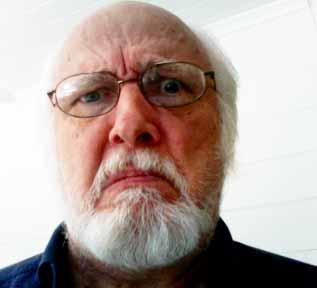A point of transition between capacity as the metaphysics of well-being and choragraphy as electrate practice is Algirdas Greimas's semiotic theory of narrative. The experience of "in/capacity" foregrounded in Agamben's retrieval of "potentiality" is central to narrative form. Part of the task of the coming philosophy is to adapt this dimension of to-be-able to the affordances of electracy. Below is a review of the semiotic theory (cited from Avatar Emergency). Greimas adapted the diagram of the narrative "square" from Aristotle's logical square.

The elementary narrative exploited so efficiently in popular culture is an account of a subject who desires an object of value and sets out to get it, and who is transformed by the process. This is ethos. The accomplishment of the quest manifests the principal modalities of human capacity, the qualities of will, duty, power, and knowledge. Decorum display. It is worth reviewing scenario dynamics, since these undergo distortion (Entstellung) in dromosphere. These qualities are expressed as modalities of doing and being in the narrative and discourse, and it is this modalization that may lend itself to inclusion in ontology. In semiotic theory, a narrative correlates three axes of interaction (Martin and Ringham). The axes put in relation six actants (functions) constituting the minimal units of any narrative: Sender-Receiver, Subject-Object, Helper-Opponent. These are the positions of ethos enacted in scenarios: a map of decorum. The following review is from Martin and Ringham’s handbook:
Communication. The modality of the axis of communication is “knowing” (cognitive, epistemic), referring to the internal state of mind of actants (ignoring, deceiving, etc). A story is first of all a communication in a specific culture and historical period. It is a message in which a Sender persuades/manipulates a Receiver, and a Receiver interprets/resists, relative to an Object of Value. The Sender is simultaneously any or all of the culture collectively, the author, an authoritative character in the story, a caregiver (reading the story to a child); the Receiver is also the culture, the Subject, another character in the story, the one reading or listening. The meaning of the story as a whole results from the axiology (system of value relations in the paradigm) and ideology (specific beliefs enacted in the syntagm) created within the text. The story has a point of view, and the purpose of the communication is to express it. When we ask after the wisdom of literature, we want to know the purport of these axiologies and ideologies (formal and thematic presentations of values). The story (Cinderella is a prototype) communicates a message about what is important in life and how to get it.
Desire. The modalities of the axis of desire are “wanting” (will) and “having to” (duty). Subject and Object are created together, interdependent, with the state of wanting-to-be and wanting-to-do initiating the becoming of the Subject as such. The Subject begins in a condition of separation (disjunction) from the Object of Value. The syntax of the narrative develops as transformation, a mediation, bringing the Subject into conjunction with the Object. This process is characterized as a practical syllogism: Major premise = the desire; Minor = the means; Conclusion = the action. Cinderella desires to have a life, to be loved and respected, and the event of the royal ball incarnates this desire.
Performance. The actants of this axis represent the competence of the Subject, in the positions of the Helper and the Opponent or Anti-Subject. The modality is being-able-to, or power. The syntax of action stages three tests, gauging the worthiness of the Subject, the confrontation or decision that accesses the Object, and recognition or evaluation of the success (or failure). The Opponent is Cinderella’s step-mother and step-sisters, who are Subjects in their own right (Anti-Subjects), but this is not their story. The Helper (donor) is the magic fairy, who provides the accessories Cinderella needs to accomplish her winning of the Prince. The Object of Value is tracked through the transformations of mediation between poles by means of a figure, a circulating item that is exchanged between or among actant positions. The famous glass slipper is a token of this circulating type. When politicians appeal to the proverb about “kicking the can down the road,” they may not be aware that this “can” alludes to posse, the modality of “I can.” If you cannot, then you must delay the action. The problematic posse is a primary concern of concept avatar. Brand hears “entourage,” but avatar interrupts: im/potence.
Discourse: the surface vocabulary is organized into a series of figures. The other dimension of text besides narrative is discourse, including all the other features of language and style. This is the dimension opened for ontological development in electracy. The lexicon of exposition describing Cinderella’s beauty, poverty, hard circumstances; the step-relatives’ ugliness, meanness, selfishness; the Prince’s wealth and so forth, is already accessible to Natural Language Programming and semantic ontology. "Discourse" hosts the figural, a design pattern that appropriates the entire scenario for further signifiance (allegory). Discourse/figure (see Lyotard) supports an ontology of manner (a way of being).
See Bronwen Martin and Felizitas Ringham, Dictionary of Semiotics, NY: Cassell, 2000.

